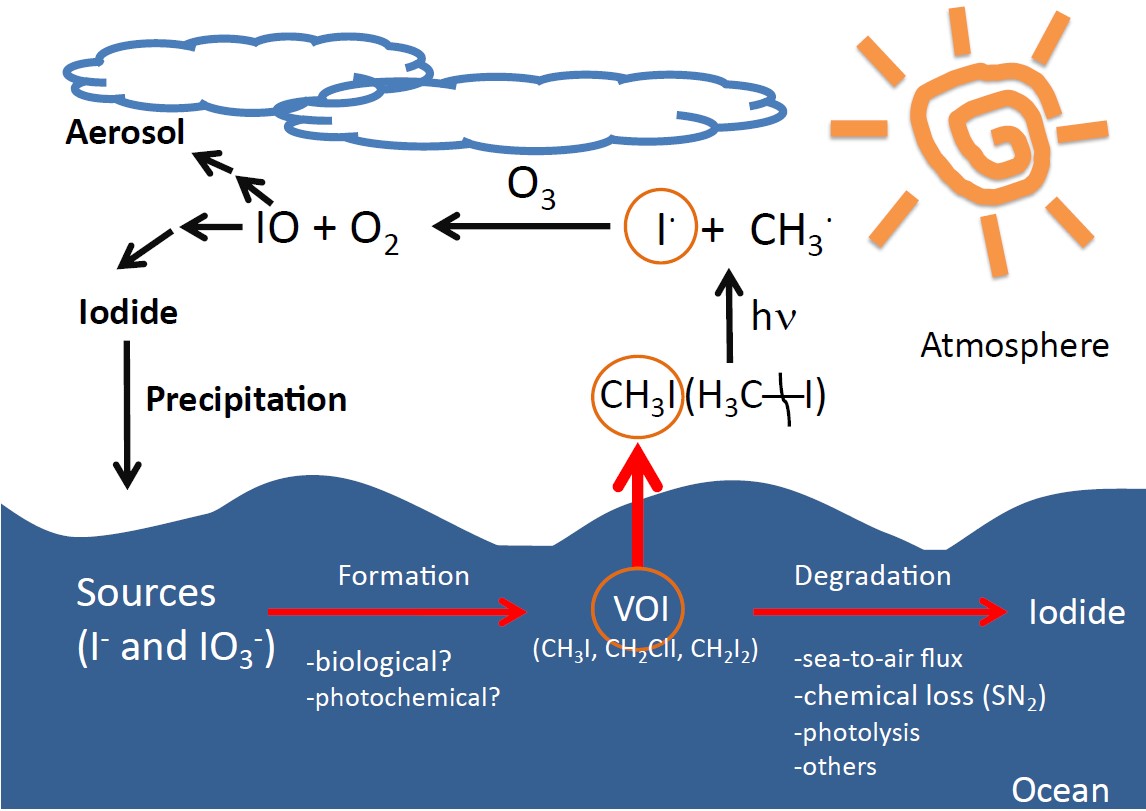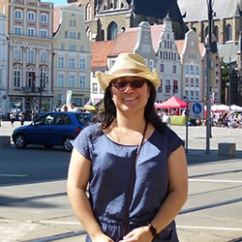Halocarbon Cycle ‑ Iodine
Background
Iodine is a bioactive element with various species in seawater that are sensitive to redox reaction. Organic and inorganic Iodine compounds in forms of gas or particle can cross the air-sea interface, and they play a significant role in modulating the chemistry of the atmosphere and the climate. In addition, Iodine is essential for the synthesis of thyroid hormones in humans and fishes. In commercial aquaculture, developmental problems of halibut larvae closely link to iodine deficiency as a combined result of diet and iodine’s speciation in seawater.
Volatile organic iodocarbons (VOIs), such as iodomethane (CH3I), chloroiodomethane (CH2ClI) and diiodomethane (CH2I2), are predominantly produced from the ocean and the major sources of iodine in the atmosphere. They are also called “very short-lived halogenated substances” (VSLS) due to their high reactivity and short atmospheric lifetimes. In the atmosphere, iodomethane is the most abundant VOI because of its longer lifetime (in days) than chloroiodomethane (in hours) and diiodomethane (in minutes).
Past studies suggested the linkage of VOIs to ozone destruction as a catalyst and aerosol formation at the air-sea boundary. However, the mechanisms of their production pathway are still poorly understood. To identify the future impacts to the ecosystem, climate change and aquaculture, it is important to improve our understanding of the halocarbon cycle in the surface ocean. Long term time-series observations allow scientists to study key processes and controlling factors of their productions and losses in the ocean.

A schmetic diagram of iodocarbon cycle (provided by Dr. Shi)
A Study of Halocarbon Cycle through the Bedford Basin Time Series
Since 1992, BIO has been observing physical, chemical and biological changes in the Bedford Basin and recorded a set of time series. As a coastal fjord, Bedford Basin is an ideal place to test hypotheses and models of organic iodocarbons and inorganic iodine. With only a very few long-term observations of iodocarbons have been reported to date, the Bedford Basin Time Series presents an unique opportunity to fill the gap in understanding the processes of the halocarbon cycle.
A project to study the halocarbon cycle in the Bedford Basin, led by CERC.OCEAN research associate Dr. Qiang Shi, has been conducted since 2015. Halocarbon samples (CH3I, CH2ClI and CH2I2) were collected weekly at four depths (1,5,10 and 60m), and their concentrations were measured using purge and trap gas chromatography detected by both mass spectrometry (MS) and electron capture (ECD). Through the time series, she has observed seasonal to interannual variability of VOIs at different depths in the Bedford Basin. Since 2019, a further collaboration with Dr. Jong Sung Kim and the Health and Environments Research Centre (HERC) Laboratory at Dalhousie University has helped in understanding the iodine cycle and the production of VOI based on the Bedford Basin Time Series.


